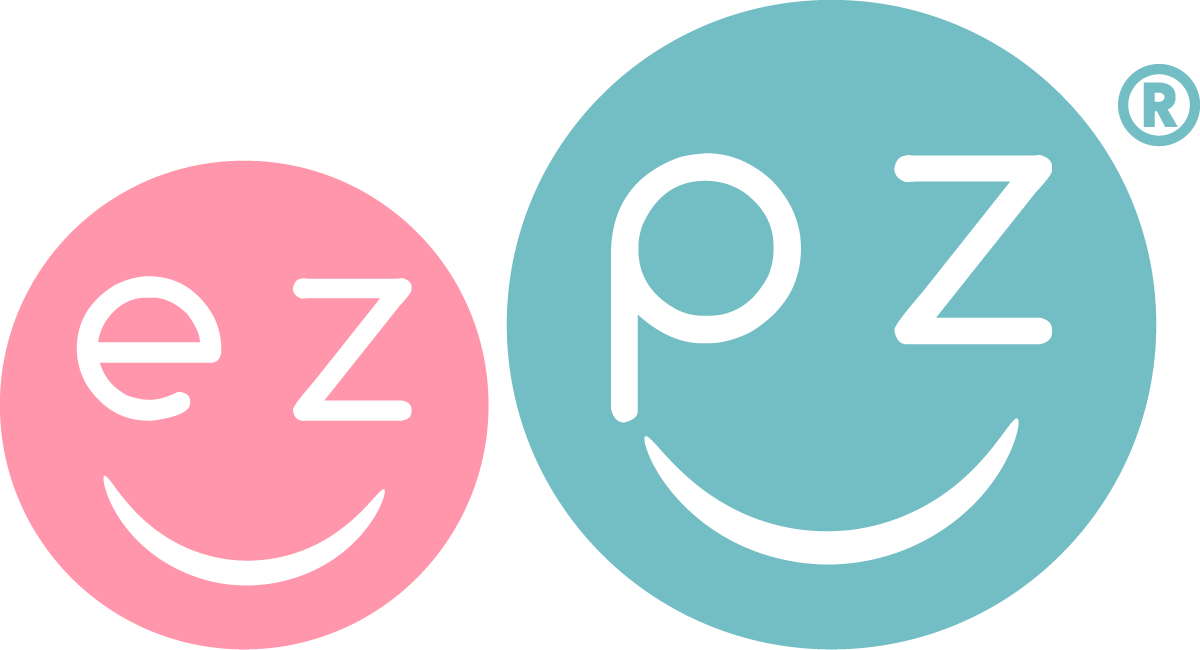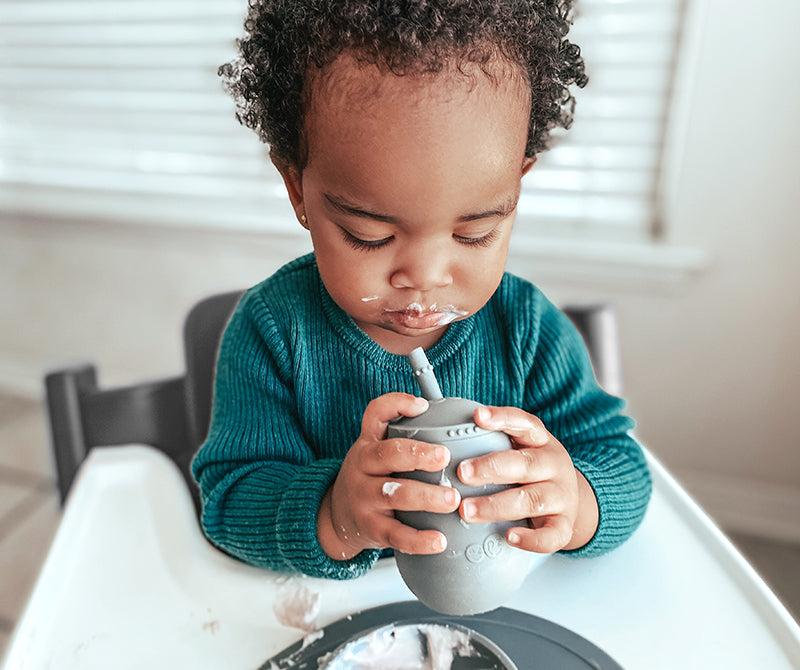Did you know that learning to drink from a straw is an important developmental milestone for babies and toddlers? The ezpz Mini Cup + Straw Training System was designed to help little ones safely build their straw drinking skills. Here are four tips to help you teach your older infant or toddler to use a straw safely and successfully.
Timing: Over the course of my (25+ years) feeding career, I have observed a lot of families and therapists trying to teach straw drinking to a baby between the ages of 4-9 months. I find that starting this early can cause babies to cough, choke and even have increased episodes of ear infections (because they lack the proficiency to do it safely). Straw drinking is a complex skill for a young infant to learn, as they have to suck, hold their breath, swallow, exhale and then breathe again. Introducing straw drinking too early can be an uncomfortable and sometimes painful experience, and some babies may refuse to drink from a straw cup again. This can make weaning off a bottle a more difficult and lengthy transition.
Transition: As an infant swallowing specialist, I have taught thousands of babies how to learn to drink from a straw. I find that the ‘sweet spot’ for drinking safety and success is between 9 and 12 months of age. Developmentally, babies should be focusing on open cup drinking in the early months, and then transition to straw drinking. Although developmental ages are approximate and vary with each baby, here is a timeline for parents to consider:
- 4-9 months: Open cup
- Milestone: Baby will drink from an open cup (held by an adult)
- Product: ezpz Tiny Cup
- 9-15 months: Open cup + Straw cup
- Milestone: Toddler will drink from an open cup (independently with minimal spillage)
- Milestone: Toddler will drink from a straw independently
- Product: ezpz Mini Cup + Straw Training System (includes a toddler open cup + straw / lid system)
Textures: I like to teach children to use a straw with a thicker liquid first, like a puree. Once they are successful with that texture, I offer thinner purees (the consistency of nectar). Then I move onto a denser liquid, such as breastmilk or formula. Finally, I offer water, usually at around 10 months of age. Thin liquids are the hardest texture for babies to consistently swallow safely.
Teaching: Some children initially struggle with straw drinking. To make the transition easy, be sure your child is at least 9 months of age and start by offering a liquid with thicker consistency. Here are a few steps to help you teach straw drinking:
- Take the Mini Straw and place the end of the straw into the puree (or liquid) then cover the tip with your finger. This will draw a small amount up into the straw.
- Place the end of the Mini Straw towards your baby’s mouth, but don’t put it in their mouth. Encourage your child to lean toward the straw to independently place their lips on it.
- Then slowly release your finger so they receive a tiny sip. This will help your child to have good lip rounding while learning to swallow from the straw.
- Practice this strategy a few times until you feel your child actively sucking from the straw. Then place the Mini Straw back into the Mini Cup and encourage your little one to try drinking from it using the sensory bumps and straw angle to help facilitate a safe swallow.
Safe straw drinking is a critical skill to learn in order to foster drinking independence. How will your family teach straw drinking with your little one using the ezpz Mini Cup + Straw Training System? Share your straw drinking success with us by using the hashtags #ezpzfun #ministraw.



